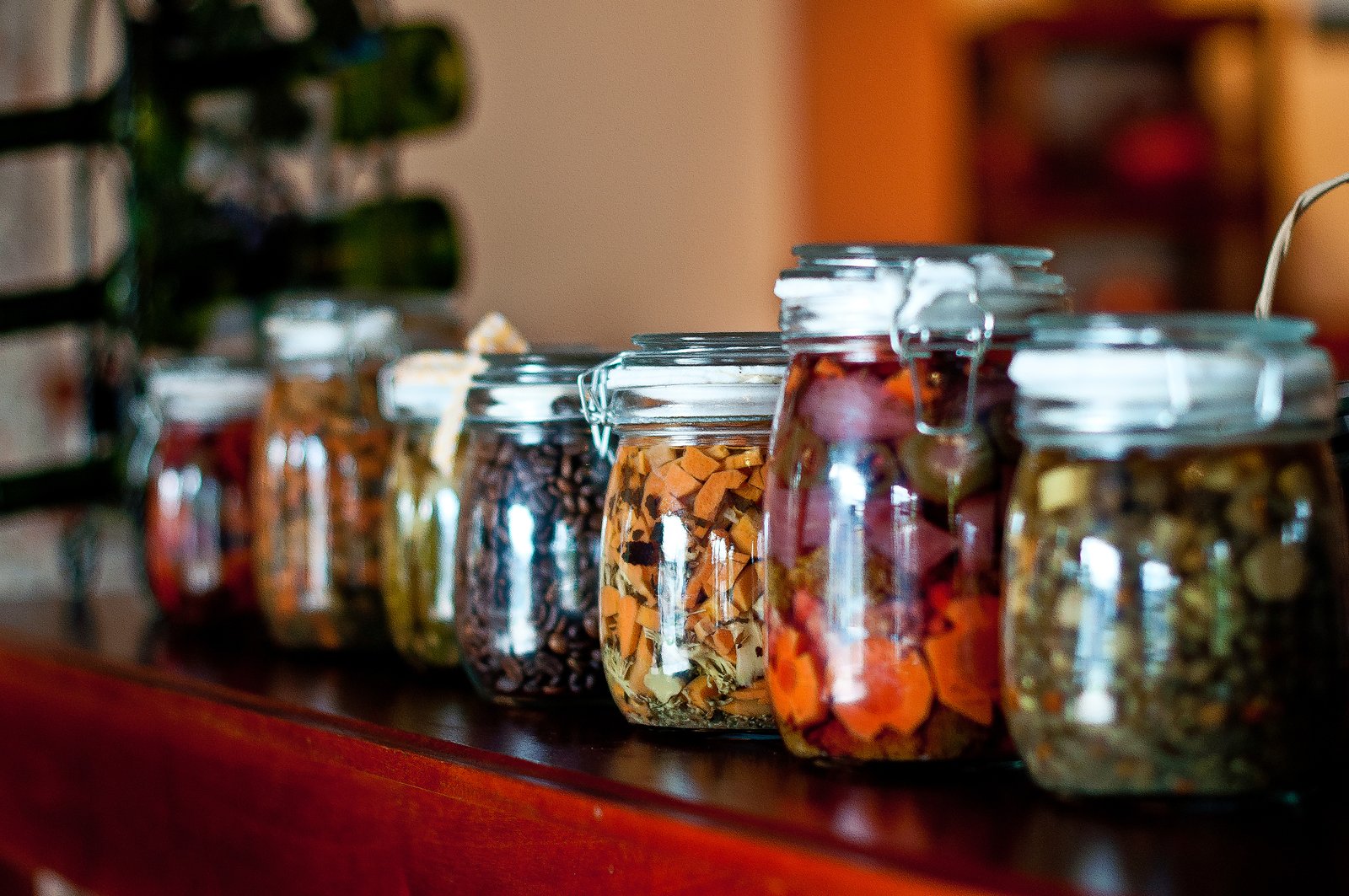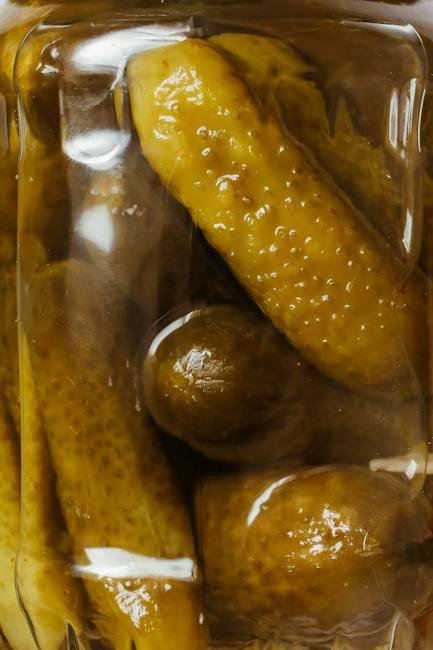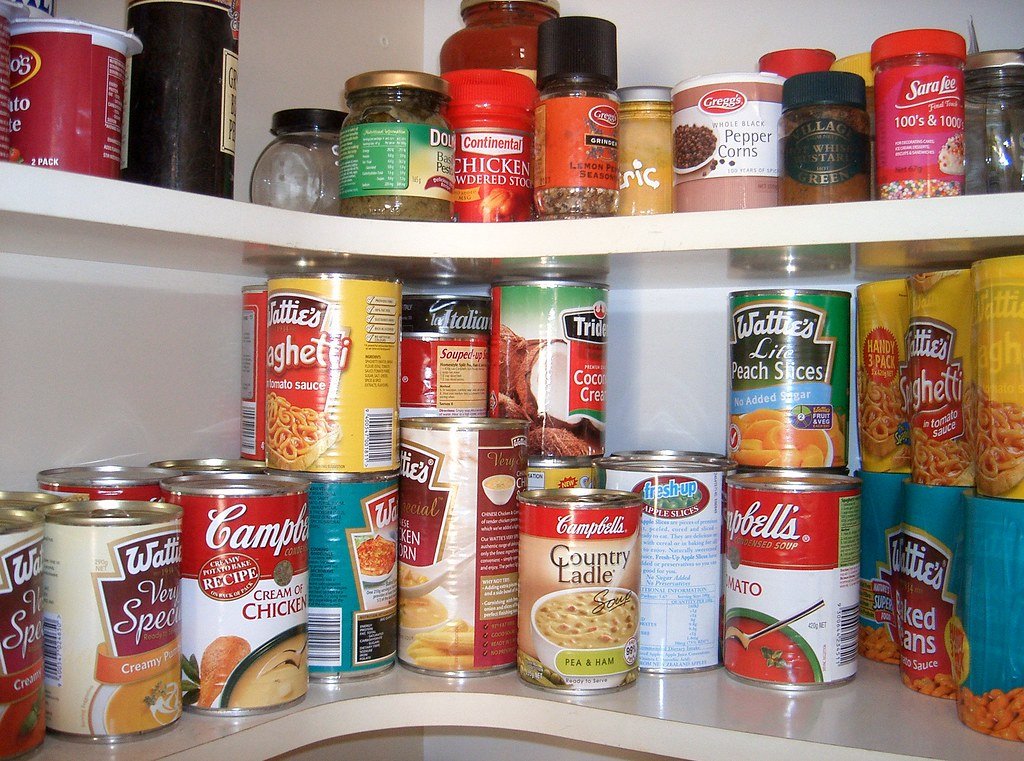Now Reading: How to Store Nuts and Seeds for Longevity
-
01
How to Store Nuts and Seeds for Longevity

How to Store Nuts and Seeds for Longevity
Nestled beneath the branches, nuts and seeds serve as nature’s scrumptious treasure trove, brimming with essential nutrients and a hearty dose of crunch. These tiny powerhouses of vitality deserve to be cherished and preserved, ensuring their longevity for future snacking pleasure. As nature’s culinary gift, understanding the art of storing nuts and seeds becomes a vital skill in harnessing their full potential, averting any pitfalls of rancidity or loss of flavor. With a sprinkle of knowledge and a touch of finesse, discover the secrets to safeguarding these edible marvels, not just for weeks or months, but for a lifetime of nutty and seed-filled adventures.
Table of Contents
- Choosing the Right Containers to Preserve Freshness and Nutritional Value
- Understanding Optimal Temperature and Humidity Conditions for Preservation
- Implementing Proper Storage Techniques to Extend Shelf Life
- Tips and Tricks for Enhancing Longevity of Nuts and Seeds
- Exploring the Benefits of Vacuum Sealing for Long-Term Storage
- Q&A
- Final Thoughts

Choosing the Right Containers to Preserve Freshness and Nutritional Value
When it comes to preserving the freshness and nutritional value of your food, choosing the right containers can make all the difference. Here are some tips to help you make the best choices for storing your ingredients:
1. Material matters: Opt for containers made of glass or BPA-free plastic. These materials do not leach harmful chemicals into your food and are safe to use for long-term storage. Glass containers are not only environmentally friendly, but they also help retain the taste and freshness of your ingredients, making them an excellent choice for preserving the nutritional value of your food.
2. Airtight seals: Look for containers with airtight seals to prevent any air from entering and spoiling your food. This will help maintain the freshness of your ingredients and extend their shelf life. Vacuum-sealed containers or those with snap-lock lids are great options to keep air out and preserve the nutritional integrity of your food.
3. Convenient compartments: Consider containers with separate compartments or dividers to store different ingredients individually. This helps to prevent cross-contamination and allows you to easily portion and pack your meals. Divided containers are not only practical but also ensure that the flavors and textures of your food remain intact.
4. Stackable organization: Opt for containers that are stackable to maximize storage space and keep your pantry or fridge organized. Stackable containers allow for easy access and help prevent your ingredients from getting lost or forgotten. By keeping your food neatly organized, you can easily identify and use them before they lose their freshness and nutritional value.
By choosing the right containers, you can ensure that your food stays fresh, delicious, and nutrient-rich for longer periods. Whether you’re meal prepping or storing leftovers, investing in quality containers is an essential step towards maintaining the integrity of your food.
Understanding Optimal Temperature and Humidity Conditions for Preservation
Preservation plays a vital role in maintaining the quality and longevity of various objects, artifacts, and perishable items. The conditions under which these items are stored greatly affect their preservation. It is crucial to understand the optimal temperature and humidity conditions to ensure the preservation process is successful.
Temperature control is essential as extreme temperatures can either accelerate deterioration or cause freezing, leading to irreversible damage. The ideal temperature for preservation varies depending on the type of item being preserved. For example, temperature requirements for preserving food differ from those for preserving delicate artworks or vintage documents.
- Food Preservation:
- Refrigerator temperature: 32°F to 40°F (0°C to 4°C)
- Freezer temperature: 0°F to -10°F (-18°C to -23°C)
- Wine storage temperature: 55°F to 60°F (12°C to 16°C)
- Artifacts Preservation:
- Room temperature: 68°F to 72°F (20°C to 22°C)
- Relative humidity: 40% to 55%
- Document Preservation:
- Room temperature: 60°F to 70°F (15°C to 21°C)
- Relative humidity: 30% to 50%
Humidity control is equally important. Incorrect humidity levels can lead to mold growth, decay, or material expansion/contraction. While high humidity promotes mold and fungal growth, low humidity can cause irreversible brittleness in certain materials. Thus, maintaining an optimal humidity range is crucial in the preservation process.
By understanding and implementing the appropriate temperature and humidity conditions, objects of varying natures can be safeguarded, ensuring their longevity and maintaining their original attributes for generations to come.

Implementing Proper Storage Techniques to Extend Shelf Life
Proper storage techniques are essential for extending the shelf life of various products. By implementing the right methods, you can preserve the quality, flavor, and nutritional value of your items for a longer period. To ensure optimal storage, follow these guidelines:
1. Temperature Control: The ideal temperature for different products may vary, so it’s important to know the specific requirements. Keep perishable items such as dairy and meat products in the refrigerator at 40°F (4°C) or below to slow down the growth of bacteria. On the other hand, some fruits and vegetables are better stored at room temperature or in the fridge’s crisper drawer.
2. Packaging Protection: Proper packaging helps preserve the freshness of your products. Use airtight containers, resealable bags, or vacuum-sealed packaging to prevent air exposure and minimize the risk of spoilage. Additionally, label your containers with the date of storage to keep track of their freshness.
3. Rotation System: Implement a first-in, first-out (FIFO) system to ensure you consume the oldest products first. Place newly purchased items at the back of the shelf to maintain freshness and avoid waste.
4. Humidity Management: Some items like bread, crackers, and cookies tend to become stale when exposed to excess moisture. Use airtight containers or store them in a cool, dry place to maintain their crispness.
By applying these proper storage techniques, you can significantly extend the shelf life of your products, reducing waste and ensuring that you always have fresh and quality items at hand. Implement these practices to maximize the enjoyment and usability of your pantry staples and refrigerated goods.
Tips and Tricks for Enhancing Longevity of Nuts and Seeds
When it comes to preserving the freshness and maximizing the lifespan of nuts and seeds, a little knowledge can go a long way. Here are some creative tips and tricks that will help you ensure the longevity of these delicious and nutritious snacks:
- Proper Storage: The key to extending the shelf life of your nuts and seeds lies in storage. Keep them in airtight containers, like glass jars or sealed plastic bags, away from direct sunlight and heat sources. This will prevent them from going rancid and maintain their flavor and crunchiness for longer.
- Refrigeration or Freezing: Consider refrigerating or freezing your nuts and seeds, especially if you live in warmer climates. Cold temperatures help slow down the oxidation process, keeping them fresh for an extended period. Just make sure to allow them to come to room temperature before consuming for the best taste.
- Rotate Stock: To avoid letting your nuts and seeds become stale or past their prime, practice a first-in, first-out (FIFO) approach. When purchasing new packs, place them at the back of your storage area, ensuring that the oldest ones are consumed first.
- Keep Moisture at Bay: Moisture is the nemesis of nuts and seeds, as it can lead to mold growth and spoilage. Add a moisture absorber, such as a silica gel packet or even an uncooked rice grain, to your storage containers to reduce humidity and extend their life span.
- Roasting and Salting: When bought in bulk, nuts and seeds can be roasted and salted at home. Roasting them at a low temperature removes any excess moisture, keeping them drier for longer periods. Sprinkle a pinch of salt, which not only enhances the flavor but also acts as a natural preservative.
By following these simple yet effective tips, you can ensure that your precious nuts and seeds remain fresh, tasty, and full of nutrients, allowing you to savor their incredible flavors in your favorite recipes or enjoy them as convenient snacks whenever you please. Happy preserving!
Exploring the Benefits of Vacuum Sealing for Long-Term Storage
When it comes to long-term storage, vacuum sealing is a game-changer. The benefits of this innovative method are far-reaching, making it a popular choice for individuals and businesses alike.
One of the primary advantages of vacuum sealing is its ability to extend the shelf life of food and other perishable items. By removing the oxygen from the packaging, vacuum sealing helps prevent the growth of bacteria, mold, and other contaminants. This means that your favorite foods will stay fresh and delicious for longer periods, reducing waste and saving you money in the long run.
Additionally, vacuum sealing is great for saving space. The process removes excess air from the packaging, allowing items to be neatly stacked and easily organized. Whether you’re storing bulky clothing or essential documents, vacuum sealing minimizes clutter and maximizes storage efficiency.
Furthermore, vacuum sealing has proven to be a reliable method for protecting delicate or valuable items. By eliminating exposure to air, moisture, and dust, vacuum-sealed packages are safeguarded against damage, corrosion, and decay. This makes it an ideal choice for long-term storage of important documents, photographs, and even electronics.
Summing it up:
- Vacuum sealing extends the shelf life of perishable items.
- Vacuum sealing helps save space in storage.
- Vacuum sealing protects delicate and valuable items against damage.
So if you’re looking for a practical and efficient solution for long-term storage, consider the benefits of vacuum sealing. It offers a reliable way to keep your items fresh, organized, and protected, ensuring that they’ll be in the best condition possible when you need them most.
Q&A
1. Why is proper storage important for nuts and seeds?
Proper storage is important for nuts and seeds to maintain their freshness, texture, and flavor. It also helps to prevent them from becoming rancid or developing mold.
2. What is the best way to store nuts and seeds?
The best way to store nuts and seeds is by keeping them in airtight containers or jars in a cool, dry place. Make sure to label and date them for easy identification.
3. Can nuts and seeds be stored in the refrigerator or freezer?
Yes, nuts and seeds can be stored in the refrigerator or freezer to extend their shelf life. However, ensure they are in airtight containers to prevent absorbing odors and moisture from other foods.
4. How long can nuts and seeds be stored?
When stored properly, most nuts can last for up to six months, while seeds can last up to a year. However, it’s always best to check for signs of spoilage, such as a rancid smell or change in taste.
5. Are there any nuts or seeds that require special storage conditions?
Certain nuts like pine nuts, walnuts, and pecans are high in oil content and are more prone to spoilage. Store these types of nuts in the refrigerator or freezer to preserve their freshness.
6. Should nuts and seeds be stored with or without their shells?
It’s generally recommended to store nuts and seeds without their shells, as the shells can attract pests and absorb moisture, leading to spoilage. Remove the shells before storing for best results.
7. Can I store different types of nuts and seeds together?
It is better to store nuts and seeds separately, as they have different moisture and oil content levels. Storing them together might cause the less oily ones to become dry or the higher oil content ones to turn rancid quicker.
8. What are some signs that nuts and seeds have gone bad?
Signs that nuts and seeds have gone bad include a rancid or off smell, a bitter or sour taste, or a change in color or texture. If you notice any of these signs, it’s best to discard them.
9. Can roasted nuts and seeds be stored differently?
Roasted nuts and seeds should be stored using the same methods as raw ones. However, keep in mind that roasted nuts have a shorter shelf life due to the removal of natural oils during the roasting process.
10. Are there any tips to maximize the longevity of nuts and seeds?
To maximize the longevity of nuts and seeds, keep them away from heat, light, and moisture, as they can accelerate spoilage. Additionally, buying in smaller quantities and replenishing stocks regularly ensures you always have fresh ones on hand.
Final Thoughts
As we conclude this tantalizing journey on how to store nuts and seeds for longevity, we hope you’ve unearthed a treasure trove of knowledge that will keep these tiny pockets of nutrition flourishing for years to come. From the enchanting blend of tastes and textures that nature has gifted us, to the artful preservation techniques employed by our ancestors, the culinary world is truly brimming with inspiration.
Remember, in your quest to maintain the vitality of nuts and seeds, a dash of creativity and a sprinkle of mindful storage can unlock their true potential. Explore the limitless possibilities of their incredible flavors and harness the power of these humble heroes in your everyday culinary exploits.
So whether you’re an avid baker, a culinary explorer, or simply a health-conscious food enthusiast, let these tiny marvels be the catalyst for a delicious and nutritious revolution in your kitchen. Allow their remarkable flavors to tantalize your taste buds, while their nutritional benefits weave their magic on your well-being.
May this article serve as your guiding light, illuminating the path to prolonging the lifespan of these extraordinary gems of nature. With their essence safely preserved, you have the power to savor the enchantment of nuts and seeds in all their glory, day after day, and year after year.
In this dance of time and flavors, let us embark on a lifelong journey of preserving, experimenting, and indulging in the vast array of nuts and seeds that our world brims with. So go forth, dear reader, and venture into the captivating world of nut and seed preservation. With every delicious morsel you savor, remember that you hold the key to unlocking the secrets of their longevity.
As an affiliate, my content may feature links to products I personally use and recommend. By taking action, like subscribing or making a purchase, you’ll be supporting my work and fueling my taco cravings at the same time. Win-win, right?
Want to read more? Check out our Affiliate Disclosure page.





